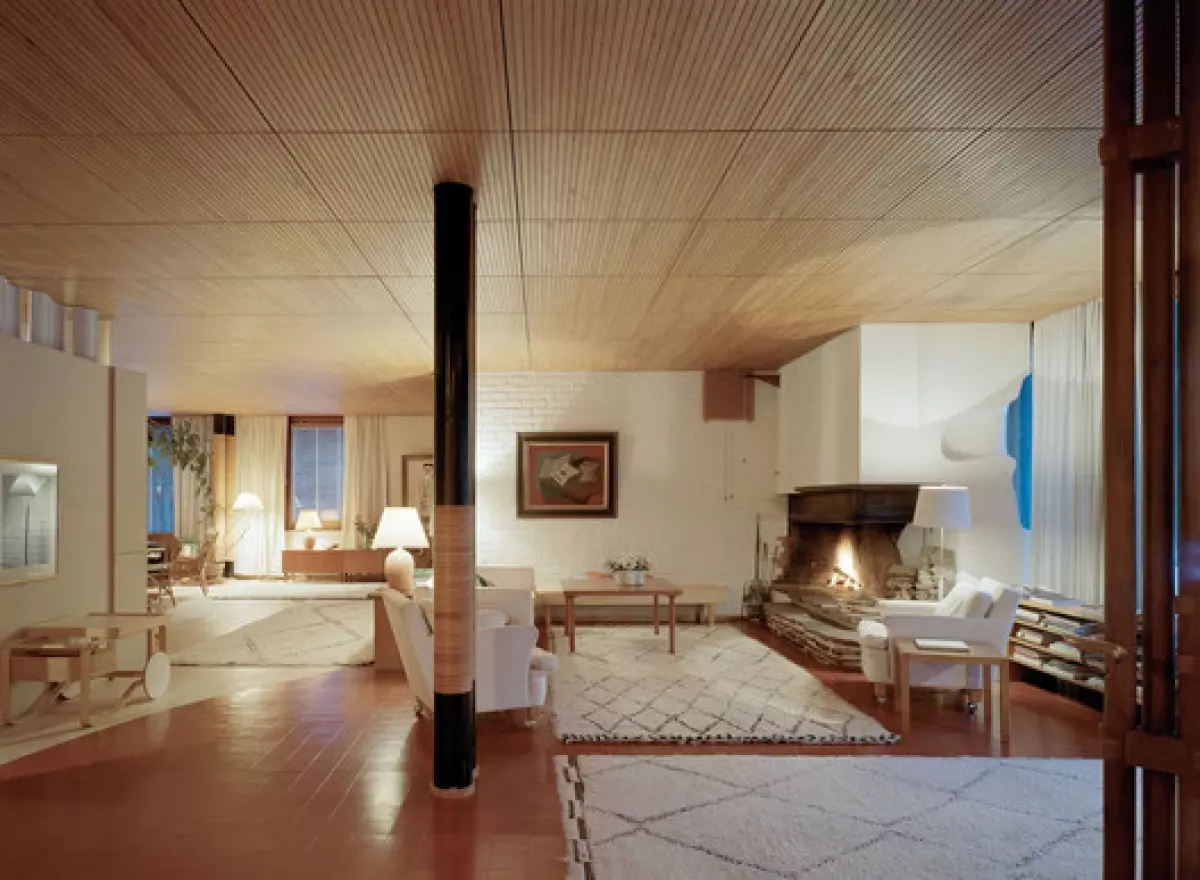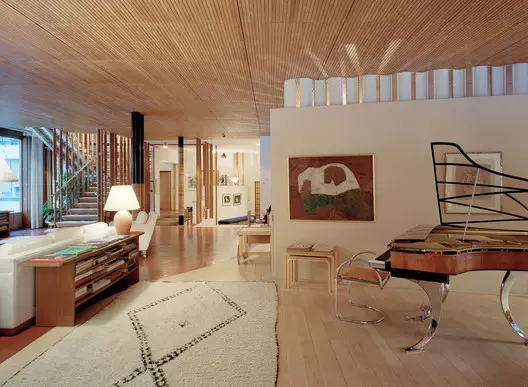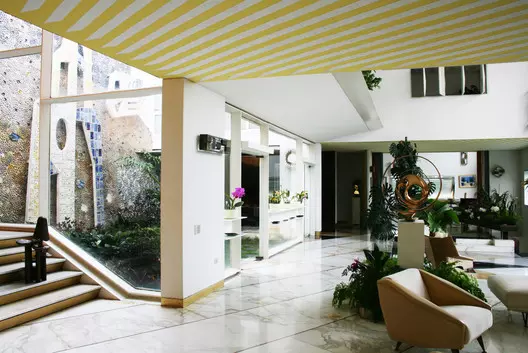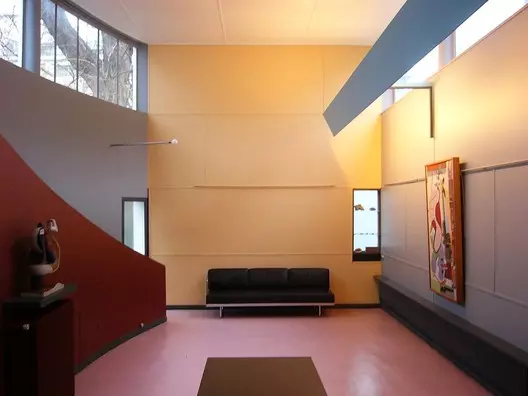 Villa Mairea / Alvar Aalto. Image: © Åke Eson Lindman
Villa Mairea / Alvar Aalto. Image: © Åke Eson Lindman
The 20th century was a revolutionary period for design, marking the emergence of modern architecture and pushing the boundaries of building form and material exploration. Architects of this era experimented with new ideas, resulting in iconic interior spaces that continue to inspire and shape the discourse of architecture today.

Residential interiors, in particular, became a playground for architects to explore new ways of living and express their own unique identities through innovative furniture and spatial organization.
In this article, we have curated ten architectural classics previously featured on Archdaily that epitomize timeless interior design and continue to inspire architects worldwide.
Koshino House / Tadao Ando
 Tadao Ando's Koshino House. Image: © Kazunori Fujimoto
Tadao Ando's Koshino House. Image: © Kazunori Fujimoto
The Koshino House by Tadao Ando features narrow vertical apertures on the façades, allowing natural light to create intricate patterns and shadows within the interior spaces. The minimal Japanese furnishings complement the mostly concrete and wood construction, creating a harmonious and serene atmosphere.
Villa Mairea / Alvar Aalto
 Villa Mairea / Alvar Aalto. Image: © Åke Eson Lindman
Villa Mairea / Alvar Aalto. Image: © Åke Eson Lindman
Villa Mairea, designed by Alvar Aalto, showcases the transition from traditional to more modern architectural designs. The interior spaces feature a progressive change in materials, from stone to tiles to timber boarding and rugs, creating a sense of domesticity and intimacy. The use of wood columns throughout the house mirrors the surrounding Finnish birch trees, establishing a strong connection to nature.
Glass House / Lina Bo Bardi
 Glass House / Lina Bo Bardi. Image: © Nelson Kon
Glass House / Lina Bo Bardi. Image: © Nelson Kon
The Glass House in Brazil is a renowned example of modern architecture. Divided into two distinct parts, the living and dining room area is dominated by glass openings that create a central courtyard, while the upper floor houses the private program in an opaque section. This design allows for a seamless integration of the interior and exterior spaces.
Villa Planchart / Gio Ponti
 Villa Planchart / Gio Ponti. Image: © Miguel Braceli
Villa Planchart / Gio Ponti. Image: © Miguel Braceli
Villa Planchart, designed by Gio Ponti, features double-height ceilings that organize the spaces based on their function, creating a visually stimulating experience. Ponti's design emphasizes unique visual lines that traverse the successive rooms, creating a sense of fluidity and cohesion.
Kaufmann House / Richard Neutra
 Kaufmann House / Richard Neutra. Image: © Julius Schulman
Kaufmann House / Richard Neutra. Image: © Julius Schulman
The Kaufmann House by Richard Neutra features a central living area surrounded by bedrooms connected through galleries and terraces. This design seamlessly blends interior and exterior spaces, creating a harmonious interaction with the surrounding landscape of mountains and trees. The house's glass and steel construction make it light, airy, and open, while the use of stone helps it blend into its natural surroundings.
Villa Roche / Le Corbusier
 Villa Roche / Le Corbusier. Image: © Rory Hyde
Villa Roche / Le Corbusier. Image: © Rory Hyde
Inspired by Corbusier's visit to the Acropolis, Villa Roche showcases a hierarchical transition from space to space. Each room in the house serves a specific purpose, with the architecture pushing toward the exterior. The central area of the villa acts as a vestibule, collecting and dispersing light. The interior features a polychromatic color scheme that contrasts with the white façade, creating a visually striking composition.
Eames House / Charles and Ray Eames
 Eames House / Charles and Ray Eames. Courtesy Image of Archilogic
Eames House / Charles and Ray Eames. Courtesy Image of Archilogic
The Eames House, designed for the Case Study House Program, consists of two interconnected boxes and a courtyard that brings them together. The interior spaces are characterized by double-height ceilings and minimal divisions, fostering integration and flexibility. The variety of furnishings, textures, and diffused light create a dynamic and inviting atmosphere.
Douglas House / Richard Meier & Partners
 Douglas House / Richard Meier & Partners. Image: © Scott Frances/OTTO
Douglas House / Richard Meier & Partners. Image: © Scott Frances/OTTO
The Douglas House by Richard Meier & Partners offers a unique progression through space, with private areas leading to a large social space that offers breathtaking views of Lake Michigan. The signature white walls and geometric drawings characteristic of Meier's style contrast with the natural surroundings, blurring the boundaries between inside and outside.
The Farnsworth House / Mies van der Rohe
 Farnsworth House / Mies van der Rohe. Edoardo Bonaccorsi Picture via VisualHunt.com / CC BY-NC
Farnsworth House / Mies van der Rohe. Edoardo Bonaccorsi Picture via VisualHunt.com / CC BY-NC
The Farnsworth House is a symbol of minimalist architecture, designed by Mies van der Rohe. Despite the controversy between the minimalist interior and the owner's desire for a more traditional space, the glass box seamlessly integrates with the surroundings. A central core and modern furniture organize the interior, creating a clean and open living environment.
Maison Louis Carré / Alvar Aalto
 Maison Louis Carré / Alvar Aalto. Image: © Samuel Ludwig
Maison Louis Carré / Alvar Aalto. Image: © Samuel Ludwig
Maison Louis Carré by Alvar Aalto organizes private and social spaces in a layered composition. Aalto's integration of building, garden, furnishings, and interior design is evident in this project. The furniture and lighting elements were specifically designed for this unique space, adding a touch of cohesion and harmony.
These ten timeless interior spaces from the 20th century continue to inspire and shape the world of architecture. They represent the experimentation, innovation, and creativity of architects of that era, leaving a lasting impact on the architectural discourse even to this day.
















